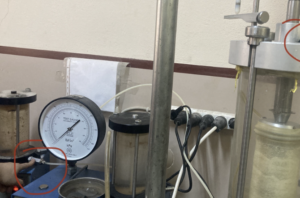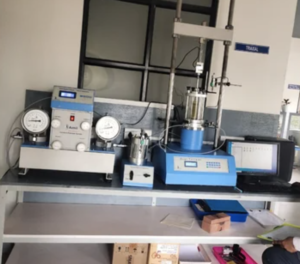Choosing a geotechnical program feels big. I’ve visited labs, watched triaxial samples shear, and learned one thing: the right university changes everything.
Fast answer: Based on 2025 subject data (Civil & Structural), the global top 10 are MIT, ETH Zurich, NUS, UC Berkeley, Tsinghua, TU Delft, Stanford, Cambridge, NTU, EPFL — strong proxies for geotechnical depth.
Let’s unpack what matters and how to pick your best-fit program.
What Makes a University Strong in Geotechnical Engineering?
Great geotechnical programs combine rigorous soil mechanics1, serious lab capacity, field experience2, and mentors who care about your growth.
Snapshot: Look for faculty depth, triaxial/cyclic/true-triaxial labs3, earthquake/underground testing, strong industry partners4, and placement data5 that prove outcomes.

I still remember a professor sliding a translucent latex membrane over a fragile clay sample—quiet room, steady hands, zero drama. That calm came from good tools and a well-run lab. Strong programs create that feeling: clear SOPs, safe margins, and data you can trust. When I walk through a lab, I scan for sample preparation flow, de-airing setups, membrane stretchers, consolidation frames, and the way technicians log every step. Details reveal culture.
The building blocks that matter
- Faculty & advising: How many active geotech faculty? Are they publishing, consulting6, and teaching clearly? Faculty roster checklist
- Facilities: Triaxial (UU/CU/CD), permeability, cyclic/true triaxial, dynamic simple shear, centrifuge, shake tables. Lab tour pointers
- Field & data: Tunneling consortia, offshore geotech, earthquake reconnaissance, digital twins7. Fieldwork playbook
- Industry links: Internships, sponsored theses, tech-transfer centers. Partner map template
- Career outcomes: Alumni in design firms, contractors, owner-operators, and research labs8. Outcome tracker
A quick “fit” table
| What to check | Why it matters |
|---|---|
| Faculty-to-student ratio | Mentoring, thesis speed, recommendation quality |
| Dedicated geotech labs | Real testing time, fewer scheduling bottlenecks |
| Earthquake/underground focus | Regional relevance (West Coast quakes, Alpine tunnels, etc.) |
| Industry partnerships | Paid projects, job pipelines, realistic thesis scopes |
| Publication + code committees | Evidence you’ll learn current best practice |
Personal rule I use: Can I see myself thriving in this lab for 12–24 months? If the answer isn’t a confident yes, keep looking. As a B2B manufacturer (Howdy; slogan “Latex membrane free”), I meet teams worldwide—culture and process discipline stand out immediately.
Global Leaders: Top 10 Universities for Geotechnical Engineering in 2025
These rankings use Civil & Structural as a robust proxy for geotechnical excellence.
Top 10 (2025): MIT (1), ETH Zurich (2), NUS (=3), UC Berkeley (=3), Tsinghua (5), TU Delft (6), Stanford (7), Cambridge (8), NTU (9), EPFL (10).

Below is a simple view (ties shown).
| Rank | University | Country/Region | Quick geotech angle* |
|---|---|---|---|
| 1 | MIT | USA | Advanced labs; strong soil–structure–quake links |
| 2 | ETH Zurich | Switzerland | Alpine tunnels, rock/soil interaction, precision design |
| =3 | National University of Singapore (NUS) | Singapore | Soft clays, ground improvement, coastal geotech |
| =3 | University of California, Berkeley (UCB) | USA | Earthquake engineering legacy; centrifuge history |
| 5 | Tsinghua University | China | Urban underground, mega-infrastructure, materials |
| 6 | Delft University of Technology (TU Delft) | Netherlands | Dikes/offshore, delta soils, geo-hydraulics |
| 7 | Stanford University | USA | Data-rich modeling, performance-based design9 |
| 8 | University of Cambridge | UK | Fundamental soil mechanics1; equipment innovation |
| 9 | Nanyang Technological University (NTU) | Singapore | Tropical geotech, smart sensing10, foundations |
| 10 | EPFL | Switzerland | Mountain geotech, infrastructure resilience |
*Angles are broad signals—every department has wider strengths. For full course lists, save this program-comparison template.
How I use this list with teams
- Shortlist 3–5 based on your region and research interest. Shortlist worksheet
- Email labs about equipment access and time-on-instrument. Mail template
- Check ties to practice (design firms, contractors, tunneling groups). Partner outreach script
- Budget/visa/logistics early—great labs fill up fast. Logistics checklist
Career Opportunities for Geotechnical Engineering Graduates
Geotechnical careers are everywhere soil meets structure—highways, metros, ports, dams, offshore wind, and earthquakes.
Quick view: Most grads start in consulting6 or contracting, then branch into owner-operators, specialist design, or research. Internships speed everything up.

When I talk with buyers in testing labs (hello, Mark in the U.S.), the best résumés show hands-on testing and site exposure. Even a few weeks logging SPTs, installing piezos, or helping with triaxial setups can set you apart. Your lab stories will matter more than buzzwords.
Where the jobs cluster
| Sector | Typical roles | Why it’s hot |
|---|---|---|
| Consulting (AEC firms) | Staff geotech, project engineer | Code updates, resilient design, risk management |
| Contractors | Geotech engineer on site, temporary works | Tunnels, deep excavations, metro expansions |
| Owner-operators | Asset geotech, risk & maintenance | Aging infrastructure, safety-first culture |
| Offshore/energy | Foundations, seabed characterization | Offshore wind, subsea pipelines |
| Research/PhD | RA/Doctoral researcher | Advanced testing, digital twins7, AI-in-geotech |
How to break in fast
- Intern early: Ask for field + lab. Intern email draft
- Build a portfolio: 2–3 pages: project snapshots, plots, lessons learned. Portfolio scaffold
- Mentors over fame: A great supervisor can double your learning speed. Advisor scorecard
- Stay tool-fluent: Python plots, data QC, CPT processing, FEM basics. Starter pack
A small story: I once watched a junior engineer calmly troubleshoot a membrane leak mid-test—clean hands, clean fix, clean data. That poise came from repetition. Programs that give you repetitions—real samples, real instruments—launch better careers.
How to Choose the Right Geotechnical Engineering Program for You
Forget “perfect.” Aim for best fit: mentors, lab time, city, and funding that match your life.
Mini-guide: Rank programs by people, practice, platform: people you’ll learn from, practice you’ll do, platform you’ll build after graduation.

A calm, practical framework
1) People. Who will read your drafts? Who will push your thinking kindly but firmly? Email alumni. Attend an online seminar. Questions to ask
2) Practice. How many triaxial frames? What’s the booking system? Can you get 100+ hours of instrument time? Lab access checklist
3) Platform. Internships, partner projects, and a city you like. Hard to thrive where you don’t want to live. City fit worksheet
4) Money & logistics. Scholarships, RA/TA, visa timelines, housing. Plan backward from start dates. Budget planner
A side table for quick comparisons
| Criterion | Weight idea | Evidence to collect |
|---|---|---|
| Advisor alignment | 25% | Calls, email replies, thesis topics |
| Equipment access | 25% | Hours/week, queue length, technician support |
| Industry ties | 20% | MOUs, internship % |
| Location & life | 15% | Commute, cost, community |
| Funding | 15% | RA/TA odds, scholarship fit |
If you visit a lab and feel that same quiet confidence—the one I felt watching a flawless membrane install—you’re likely in the right place.
Conclusion
Rankings guide you; fit wins. Choose mentors, labs, and a city that move your work forward.
-
Understanding soil mechanics is crucial for any civil engineer; find resources that explain its significance. ↩ ↩
-
Field experience is vital for practical learning; find out how it shapes engineering education. ↩
-
Learn about the function and importance of triaxial labs in testing soil properties. ↩
-
Explore how industry partnerships enhance educational outcomes and career opportunities for students. ↩
-
Understand the impact of placement data on university reputation and student success. ↩
-
Explore the diverse career paths in geotechnical consulting and what they entail. ↩ ↩
-
Learn about the innovative use of digital twins in modeling and simulation in engineering. ↩ ↩
-
Research labs are at the forefront of innovation; discover their contributions to the field. ↩
-
Understand the principles of performance-based design and its applications in engineering. ↩
-
Discover how smart sensing technology enhances data collection and analysis in geotechnics. ↩







